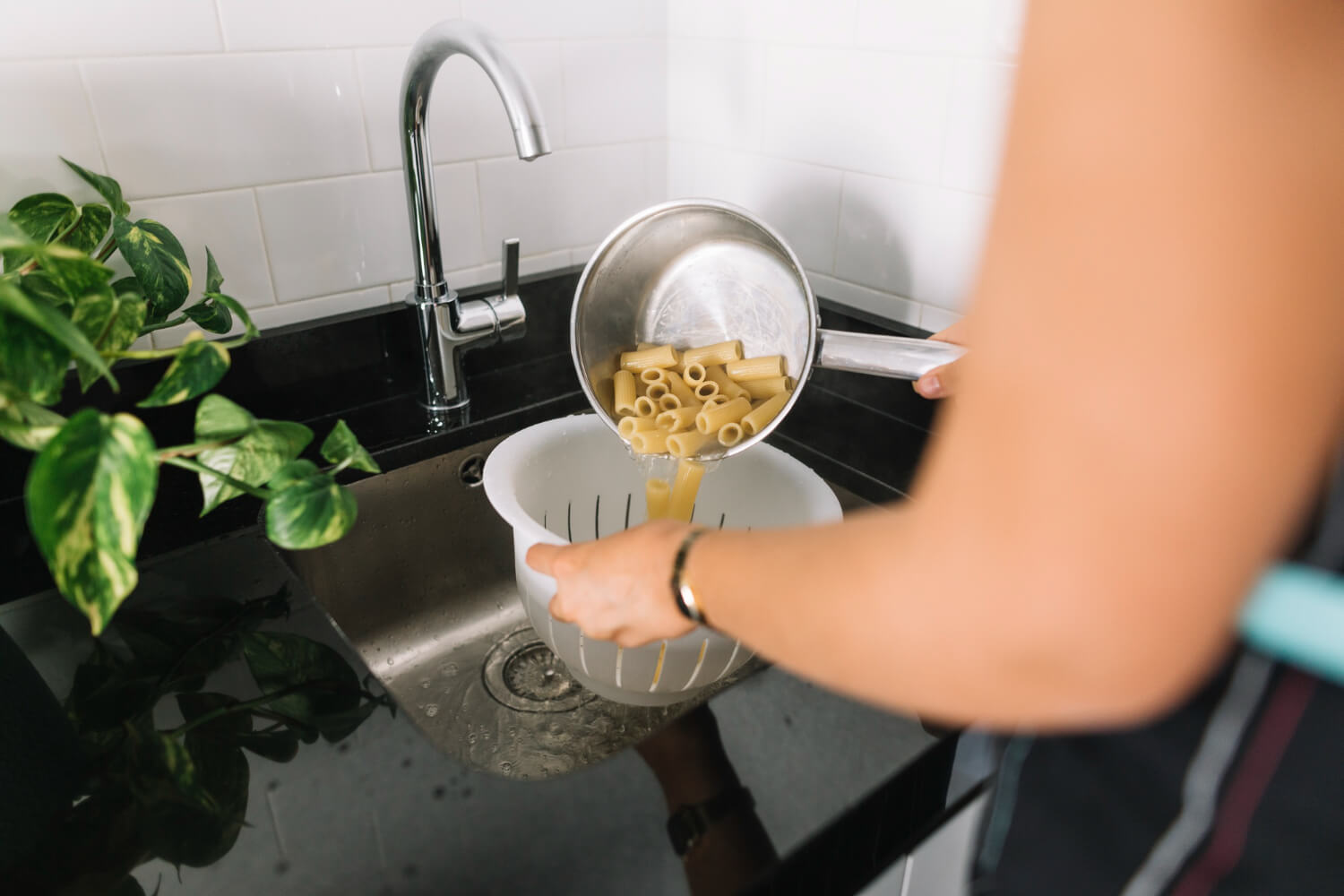Copper sinks are a beautiful addition to any kitchen. The warm, reddish-brown color and natural patina add an elegant touch. However, keeping a copper sink looking its best requires regular cleaning and care. Copper is a reactive metal that oxidises and stains easily when exposed to water, acidic foods, and cleaning products. Neglecting proper maintenance can lead to stubborn stains, scratches, and an overall dull appearance.
With the right techniques and products, keeping your copper sink in pristine condition is straightforward. This comprehensive guide will walk you through the entire process, from understanding the properties of copper to polishing it to a brilliant shine. Follow these tips, and your sink will maintain its luster and charm for years to come.
Table of Contents
Why Copper Sinks Need Special Care
Copper reacts readily with elements like oxygen, carbon dioxide, and sulfur. When copper comes into contact with water and air, a patina layer forms on the surface. This oxidised layer protects the copper underneath from further corrosion. However, acids, salt, and abrasive cleaners can damage the patina, leading to staining and wear over time.
Additionally, copper is a relatively soft metal, especially compared to stainless steel sinks. It’s prone to scratching from scouring pads, abrasive cleaners, and objects like cookware. Once scratched, the copper surface rapidly oxidises, leaving behind hard-to-remove tarnishes.
Using the proper cleaning methods and products specially formulated for copper allows the patina layer to build up naturally. This keeps the copper protected so you can enjoy the sink’s beauty without constant polishing and repairs.
Daily Cleaning of Copper Sinks
Daily maintenance is essential for copper sinks. Follow this routine to keep your sink looking pristine day-to-day:
Wash with a Soft Sponge or Rag
After each use, wipe down the sink with a soft sponge or microfiber cloth using warm water only. Avoid abrasive scouring pads or stiff brushes that can scratch the copper. Also skip the dish soap, vinegar, bleach, and other harsh cleaners at this stage—these can break down the protective patina over time.
Rinse and Dry Thoroughly
Once washed, rinse the sink well with clean water to remove all traces of food, grease, and residue. Make sure to dry the sink completely with a soft towel. Remaining moisture allows for oxidation and stain development.
Apply Copper Cleaner if Needed
For light stains or water spots that remain after washing, use a specially formulated copper cleaner. Massage it gently onto affected areas using a soft cloth. Rinse thoroughly. Buff dry with a microfiber towel.
Coat with Copper Wax Monthly
Once a month, apply a thin layer of copper wax polish to the entire interior sink surface. Rub the wax in with a soft cloth using circular motions. The wax helps maintain the patina layer and provides added protection from oxidation.
By following this simple daily routine, you can keep your copper sink looking clean, bright, and naturally weathered. Avoid using harsh dish soaps, strong alkaline cleaners, and abrasive pads during daily maintenance. These can do more harm than good.
How to Remove Stubborn Stains and Tarnish
Even with proper daily care, copper sinks will inevitably develop some stubborn stains and tarnishing. Don’t panic. Tackle them with these tips:
Make a Baking Soda Paste
For light tarnishing and stains, mix baking soda and water into a spreadable paste. Apply the paste to affected areas and let sit for 15-30 minutes. The alkaline baking soda helps break down oxidation and lift stains without damaging the patina layer. Rinse clean and dry thoroughly after.
Use Lime Juice or Lemon Juice
For heavier oxidation and discoloration, apply lemon juice or lime juice directly onto the copper. Let it sit for 10-15 minutes before rinsing. The citric acid in the juices breaks down tarnish without leaving behind residue. Avoid using vinegar, which can be too acidic and erode the patina over time.
Try Salt and Flour
For another non-toxic stain removal method, make a paste with salt, flour, and lime juice. Spread it onto stained areas, wait 15 minutes, then scrub gently with a soft cloth. Rinse and dry the sink well when finished. The salt acts as a mild abrasive to lift oxidation.
Use a Copper Cleaner
Specialty copper cleaners available at hardware stores offer a fool-proof way to tackle tough stains without damaging your sink. Look for ones containing mild acids like citric acid or phosphoric acid instead of harsh sulfuric or hydrochloric acid. Apply the cleaner with a soft sponge or cloth using minimal pressure. Let it sit for 5-10 minutes before rinsing.
Spot Polish with Silver Polish
For small spots of severe tarnish that don’t respond to other methods, use a tiny amount of silver polish. Gently rub it onto the affected area using a soft cloth. Rinse thoroughly afterward. Don’t use silver polish on the entire sink—it can strip away the patina layer. Reserve it only for targeted spot treatment.
With persistence and the right cleaning products, even the most stubborn stains will eventually lift from your copper sink’s surface. Just remember to always use a delicate touch during cleaning to avoid scratches.
Maintaining a Polished Copper Sink
While many prefer the dignified patina of an aged copper sink, others like to maintain a brilliant polished look. This requires diligent cleaning and re-polishing to keep the copper shiny:
Clean Thoroughly After Each Use
Vigilantly wipe and rinse your sink after every use to prevent oxidation and water stain buildup. Use a soft sponge or cloth and avoid abrasive scrubbers. Make sure to hand dry the sink completely since moisture is the main cause of tarnishing.
Polish Weekly
Use a high-quality copper polish weekly to maintain the shine. Apply a thin layer using a soft cloth or brush designed for copper. Rub in circular motions, then rinse and dry. Avoid liquid polishes with harsh chemicals that can degrade the copper over time.
Remove Oxidation Promptly
Check daily for early signs of oxidation like clouding or dull spots. Use a copper cleaner at the first hint of tarnish to prevent staining. Let it sit briefly before rinsing and hand drying.
Re-polish as Needed
Depending on water quality and usage levels, you may need to do a full re-polishing monthly or quarterly. Use a fine grit copper polish and a soft polishing pad. Work in the direction of the existing grain lines to restore the mirror finish. Avoid over-polishing which can thin the copper layer.
The frequent cleaning and polishing required to maintain a shiny copper surface can be labor intensive. Weigh the benefits against any aesthetic or practical concerns before committing to a polished look long-term.
How to Remove Scratches from a Copper Sink
Like other solid metals, copper sinks are prone to scratching with regular use over the years. Light surface scratches can be removed with these techniques:
Use Very Fine Sandpaper
For shallow, minor scratches try rubbing the area gently with extra fine (600-800 grit) sandpaper. Work in the direction of the existing grain lines. This smooths down the edges of the scratches so they become less noticeable.
Try a Metal Polish
Specialised metal polishes contain micro-abrasives to buff out light scratches. Apply a small amount to the affected area using a soft cloth. Rub with medium pressure. Rinse thoroughly after polishing.
Fill Deeper Scratches
For deeper gashes, opt for a metal filler paste. The paste fills in and levels the scratches so they become invisible. Once dry, buff the area with fine sandpaper. Finish by applying wax polish.
Consult a Professional
For severe scratches, gouges, and other substantial damage, consider hiring a professional sink repair service. They have the expertise and tools to make your sink look as good as new. This route is best for extensive damage beyond surface level scratches.
Preventing scratches through proper daily care is always preferable to repairs. Avoid scouring pads, harsh cleaners, and abrasive sponges. With vigilance and caution, you can keep your beautiful copper sink scratch-free for decades.
How to Seal a Copper Sink
Sealing is an optional step that provides added protection for a copper sink. Common reasons to seal a copper sink include:
- Slowing down patina formation
- Preventing further oxidisation
- Easing cleaning and maintenance
- Restoring brilliance and shine
Use these tips to seal your copper sink while preserving its attractive finish:
Clean Thoroughly First
Before sealing, clean your sink meticulously using a copper cleaner to remove all dirt, residue, wax, and oxidation. This allows the sealant to adhere properly.
Apply Sealant Sparingly
Choose a sealant specifically formulated for copper like a paste wax, liquid wax, or lacquer. Apply a very thin layer using a soft cloth or sponge in a circular motion. Too much sealant can create a plastic-like appearance.
Buff to a Uniform Coat
After applying the sealant, buff the entire surface with a clean soft cloth. This removes any excess product and creates an even finish.
Cure Per Manufacturer Instructions
Follow the product instructions for drying/curing time before using your sink. This allows the sealant to harden fully so it provides maximum protection.
Limit Reapplication
Avoid over-applying sealant, which can give the copper an artificial sheen. Once or twice a year is sufficient for most sinks with regular upkeep.
Sealing can help prolong your copper sink’s beauty and minimise cleaning needs. But many still opt to let their sink age naturally without seals or waxes. Consult a restoration specialist to decide if sealing is right for your sink.
FAQs About Caring for a Copper Sink
✓Does the patina protect my copper sink from damage?
Yes. The patina layer that naturally develops on copper creates a barrier that prevents further corrosion. This allows the underlying copper to maintain its integrity over time. However, acids and abrasion can erode patina, so proper care is still needed.
✓Can I use bleach or ammonia to clean my copper sink?
No. Both bleach and ammonia are far too harsh for copper and will damage the patina layer. Avoid them entirely, along with dishwasher detergents and acidic cleaners like vinegar. Use only mild, copper-safe products.
✓How can I restore an old, worn copper sink?
Badly damaged sinks may need extensive repairs by a professional. For general restoration, remove all patina and stains with a copper cleaner paste. Once stripped, slowly rebuild patina using wax polish. Severely eroded spots can be re-patinated using liver of sulfur solution.
✓Why are some areas of my sink turning pink?
A pinkish hue on a copper sink indicates excess oxidation. This “red plague” most often occurs from acidic foods or moisture left on the surface. Use a copper cleaner to dissolve the reddish oxidation. Prevent it in the future with thorough drying.
Conclusion
Copper sinks are stunning but require diligent care and cleaning. With the right gentle techniques, you can maintain the warm glow and vintage patina you love for decades. Avoid abrasive scrubbers and harsh chemicals that erode the protective finish. Follow these comprehensive tips, and your sink will impress guests and uplift kitchen tasks with its timeless beauty.
For immediate sink cleaning and quotes in the Parramatta area, contact the team at Affordable Cleaning Services. With over 20 years of experience, we are proud to offer top quality cleaning using eco-friendly products and modern equipment. Our bonded cleaners have the skills to handle all metal surfaces. Contact us today to restore the brilliance of your copper sinks and fittings throughout the home.






